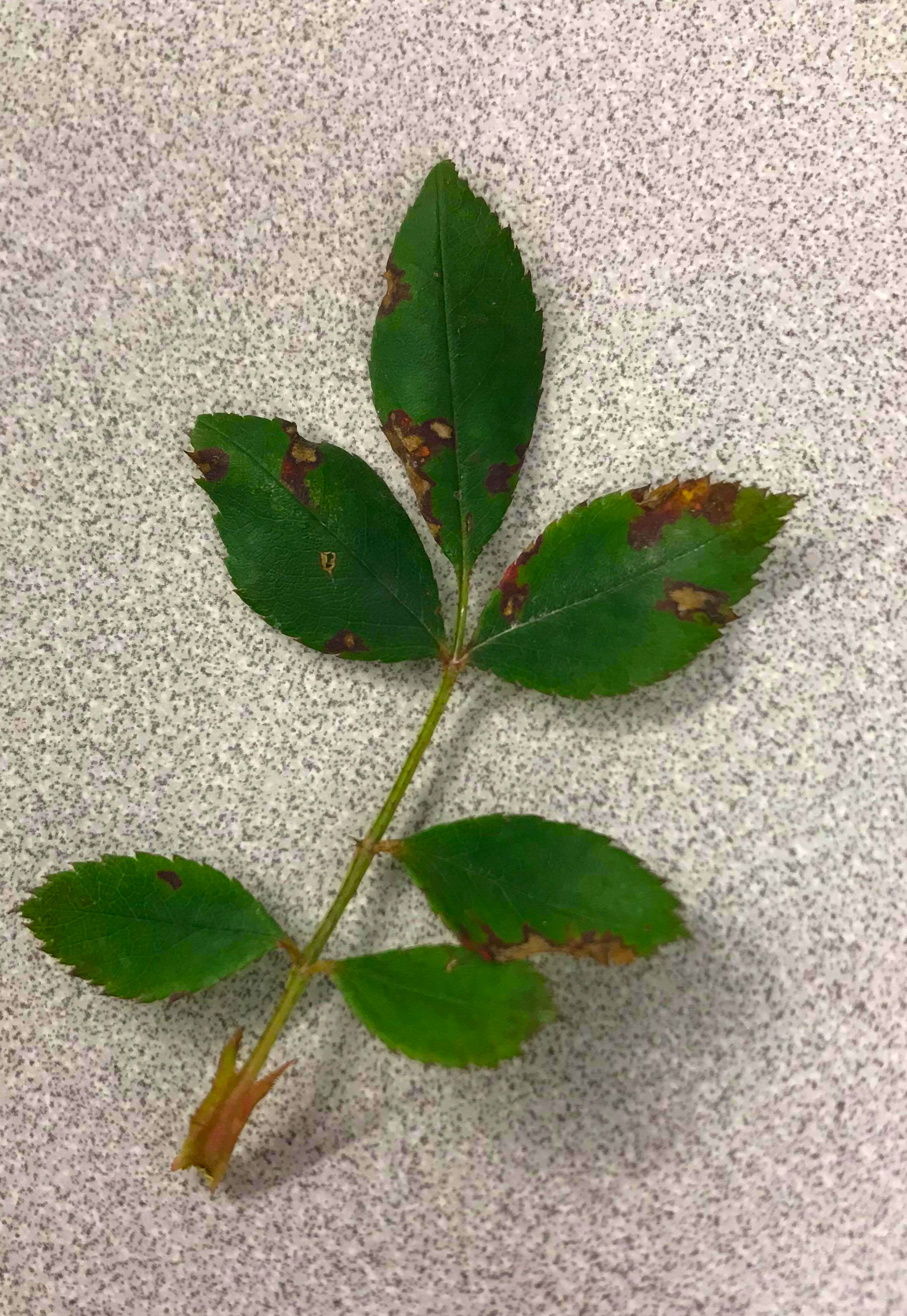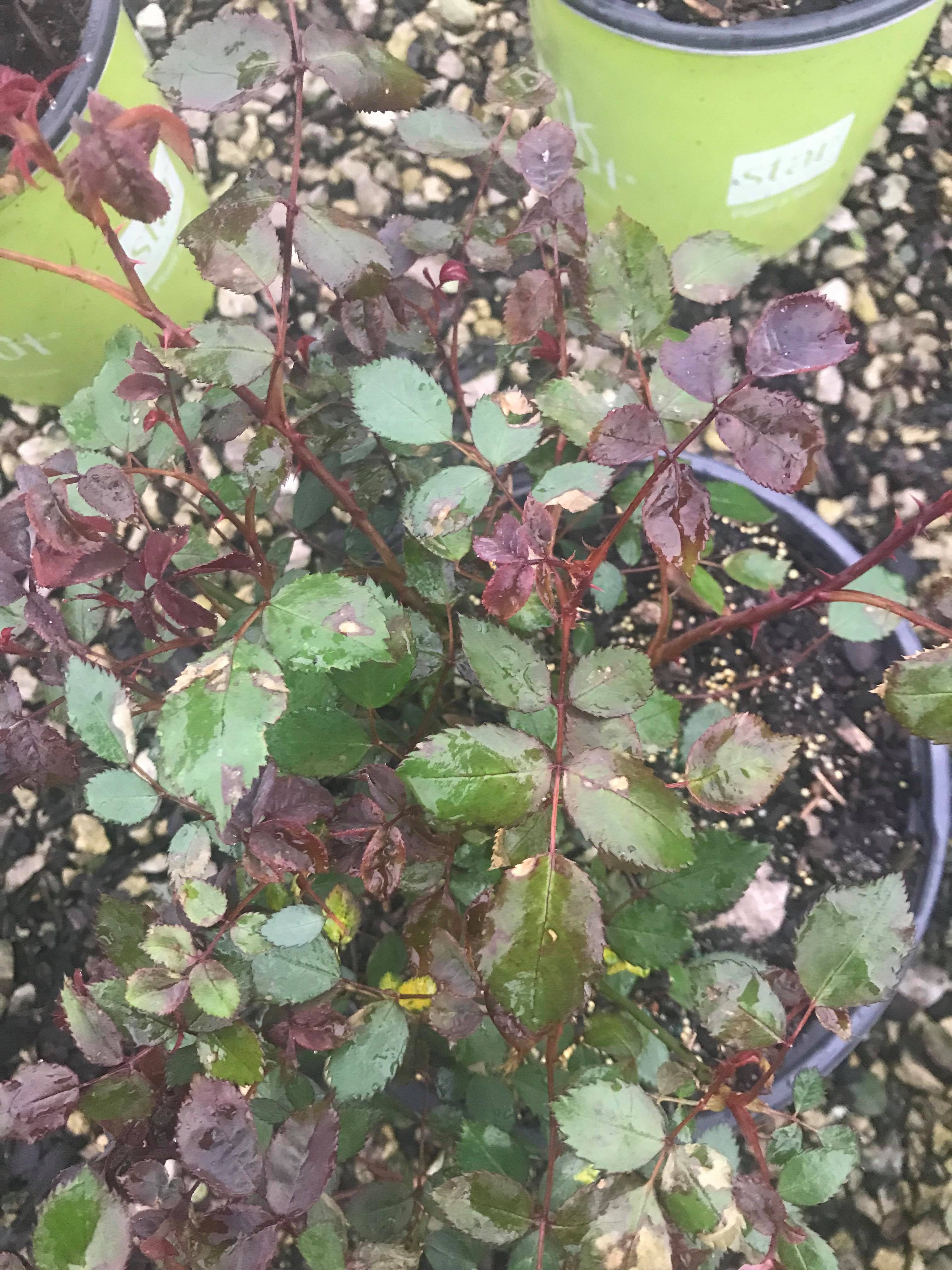A springtime disease
With spring finally on the horizon also comes the risk of getting downy mildew on your plants. Downy mildew is a disease that causes whitish or yellow patching on leaves that will then brown. Often times the patching will follow specific veins in the leaf. Eventually the disease causes leaves to completely brown and fall off. It hits hard in spring because it thrives cool, cloudy, and wet conditions with temperatures between 40 and 80 degrees Fahrenheit, all of which are heavily present during springtime.

above: An old specimen of downy mildew. New specimens will have yellow patching rather than brown.
Prevention
1. Water on sunny days: Because downy mildew likes cooler, shaded conditions, it’s best to water on sunny days in the middle of the day. This will allow leaves to dry off before nightfall. The disease cannot survive or spread in temperatures below 40 degrees or above 80 degrees Fahrenheit.
2. Clean up beds: Get rid of old leaves and branches from last year along with any clutter that has built up around your plants. Dead waste and other things around or on plants keep in moisture and prevent the plant from fully drying in the sun. Downy mildew also can overwinter in plant materials and debris, which is yet another reason to clean up your beds.
3. Good sanitation practices: Clean tools before working on plants, and clean your tools between each plant. Tools can spread downy mildew from plant to plant, so good sanitations practices will help prevent transference.

above: A plant with the beginnings of downy mildew.
Curatives
Really, there aren’t amazing curatives out there. The best way to manage downy mildew is to prevent it in the first place. There are some preventatives on the market such as Adorn, Fenstop, and a new one called Segovis; however, good sanitation and watering practices are still the most effective way to reduce your risk of getting downy mildew. You can also plant more resistant varieties of plants to further protect your landscape or garden against it. For plants that do get infected, be sure to remove and destroy plants that have been heavily hit by the disease.
Have Questions About Plants?
We may be a wholesale grower, but our staff are experts in the field. What’s more, is we love helping people learn more and understand more about plants. We grow healthy plants, and we want our plants (and any plants really) to be successful in the landscapes they are planted in. Feel free to email us at sales@lomavistanursery.com or call us at (785) 229-7200 if you ever have plant-related questions.
